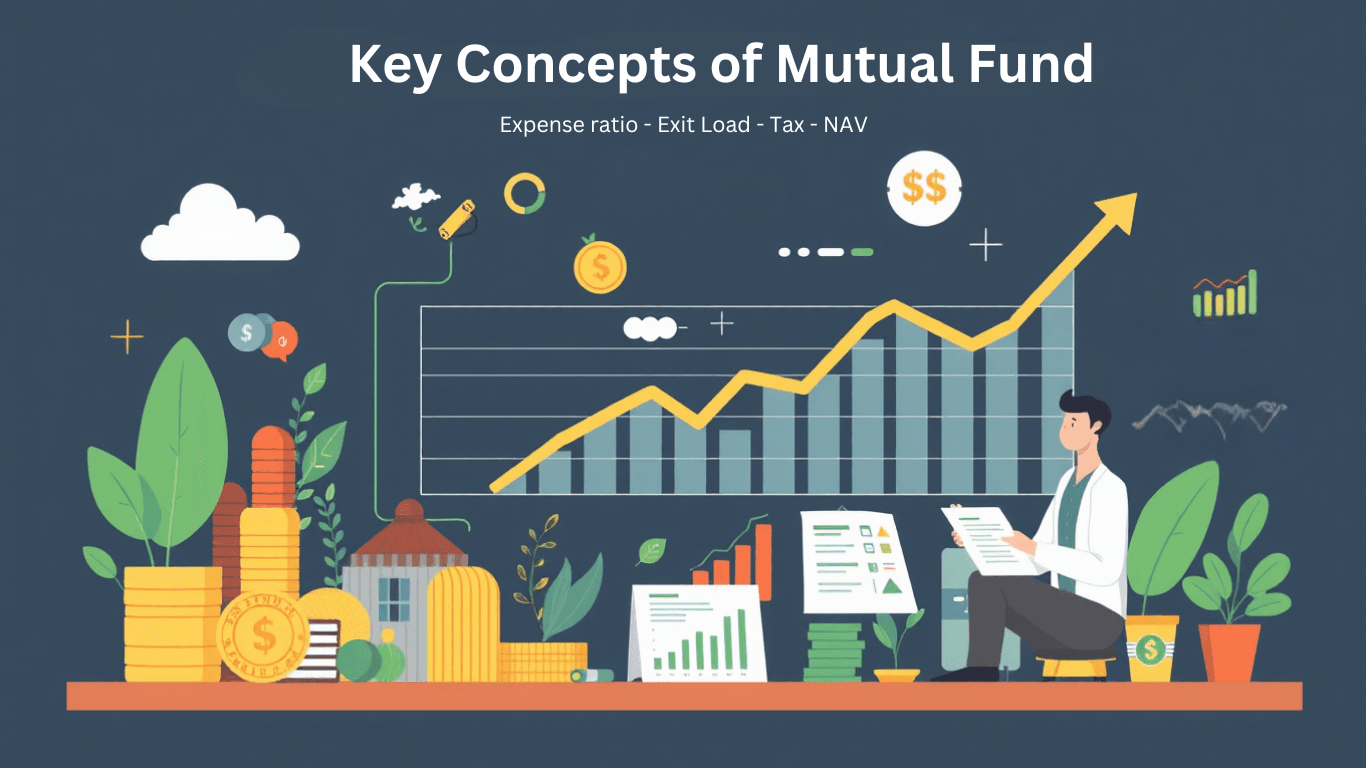Before investing in Mutual Funds, you need to understand certain concepts to make reasonable decisions. While mutual funds gather money from different investors to build a diversified portfolio, understanding the basics can influence how successful your investments will be. This guide will walk through these essential ideas – Fund house investment objective, Fund Manager, and holdings, including expense ratios and tax implications. Now, let us get down to the basics about what all investors must know when investing in these funds.
Key Concepts:
- Fund house & Investment Objective (Fund Size, NAV, Type)
- Fund Managers
- Holdings
- Expense Ratio & Exit Load
- Tax Implications
Fund house & Investment Objective:
A fund house, or asset management company (AMC), is a corporation that manages the mutual fund portfolio. It is in charge of forming, marketing, and managing several mutual funds. The fund house appoints professional fund managers who make decisions that affect the investments of investors in the fund. The history and reputation of a fund house often play an important role in determining investor confidence in its offerings.
1. Investment Objective:
The investment objective of a mutual fund is the main objective that the fund tries to achieve. It can focus on:
- Capital Gain (Capital Appreciation): Invested in stocks that have strong potential for growth to increase the value of investments over time. Dividend or interest income generation typically via bonds or Dividend-paying stocks.
- Capital Preservation: A goal to keep the value of an investment portfolio intact for investors, typically by investing in low-risk securities.
- Growth: Focused on growth through equity investments
An investment objective is the purpose or goal an investor aims to achieve through investments, understanding this helps an investor pick funds that suit his financial goals and risk appetite.
2. Fund Benchmark:
- A benchmark is essentially a standard against which the performance of a mutual fund can be measured. Accessing Benchmark helps to know how well the fund is performing as compared with the market or a specific sector. Those could be benchmarks such as the S&P 500, Nifty 50, and another group of indices that apply to the fund. It allows investors to determine if the fund manager is providing value by engaging in active management as opposed to merely following market trends.
- The trio of fund house, investment objective, and benchmark helps an investor to decide which is a good mutual fund to invest in and what could be considered as the performance.
3. Fund Size:
The total amount of assets managed within the fund It can affect the strategy and liquidity of the fund. With larger funds there could be bigger resources available, but also a lack of opportunities that can materially drive performance.
4. Net Asset Value (NAV):
NAV (net asset value) is the value of a fund’s assets minus its liabilities, on a per-unit basis. This is calculated at the end of each trading day and represents the price at which investors buy or sell fund units. Investors monitor NAV to track the performance of their funds.
5. Type of fund:
Mutual funds come in different types according to the investment strategy and objective of that mutual fund whether it is growth, income, or related to a specific sector. By understanding what type they belong to, you can align your goals and risk tolerance with the correct fund for a better fit in your portfolio.
Fund Mangers:
Fund managers are experts who make buying and selling decisions regarding the investments held within a mutual fund’s portfolio. They are central to the fund’s performance. So, a few important facts about fund managers:
- Function and Responsibilities: Study trends and data to help position the fund’s capital best.
- Know-how: Having a strong understanding of financial markets and investment tactics to weather market ups and downs.
- Decision Making: Determine which stocks, bonds to buy or sell, constantly adjusting the portfolio for the most optimized return.
Expense Ratio & Exit Load
An important metric is the expense ratio, which shows a fund’s annual costs to operate its assets under management. Let’s hit the highlights.
- Effect on Returns: A higher expense ratio results in less overall returns to investors because more fund assets are applied against expenses.
- Significance: It is important to compare the expense ratio of similar funds, as lower expense ratios can produce higher net returns over a long time.
Exit Load: A fee charged by the mutual fund company when investors redeem or sell the unit before the specified period. The specified period and exit load percentage may vary depending on the mutual fund.
Mutual Funds and Their Taxation-Related Matters
Mutual funds are taxed depending on the type of investment, holding period and investor’s income slab.
- Equity-based Funds: It is taxed 20% as STCG on holdings up to 1 year. For an asset held for more than 12 months, LTCG would be charged at the rate of 12.5% beyond ₹1,00,000.
- Debt Mutual Funds: For holdings maturity till 36 months, STCG is taxed according to the income slab of the investor. For investments held for more than 36 months, LTCG is taxed at a rate of 12.5%.
- Equity-Linked Saving schemes (ELSS): Tax deduction up to Rs. 1,50,000 per financial year
- Dividends: 10% TDS for residents and 20% TDS for non-residents DDT is paid out of debt schemes.





